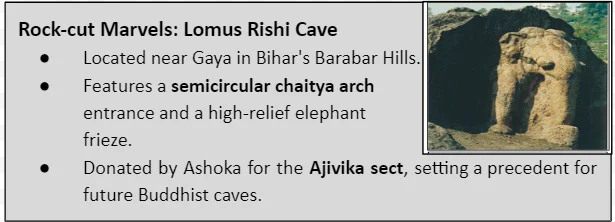![]() 23 Dec 2023
23 Dec 2023
Apart from the traditionally built stupas and viharas, the art of carving rock-cut caves is Mauryan Art flourished during their period.

| Did You Know?
In Buddhism, chaityas are places of worship and assembly for monks, while viharas are monasteries where monks lived. |
Narratives in Buddhist Art
Prominent themes in Buddhist art
Conclusion
<div class="new-fform">
</div>